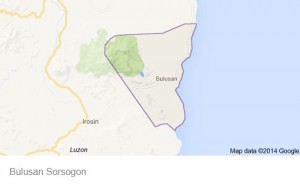
Phivolcs, in a bulletin issued at 8 a.m. today, said Bulusan Volcano, at 9:46 p.m. Wednesday, generated a steam-driven explosion from a vent on its northwest upper slopes that propelled an ash plume approximately 250 meter high before it drifted west.
Based on its seismic record, the explosion lasted 3.5 minutes and traces of ash were observed in Sitio (sub village) Tulay of Barangay (village) Bagsangan and in the villages of Cogon, Monbon, and Tinampo in Irosin, Sorsogon.
This was the second ash explosion recorded on Bulusan Volcano. A similar steam-driven explosion from the same fissure vent was recorded on May 1, lasting 5 minutes, Phivolcs said.
“Such explosions are typical to Bulusan during restive periods, when its hydrothermal system is disturbed or when steam accumulates and pressurizes at the shallow levels of the volcanic edifice,” the Phivolcs bulletin said.
It added, “Based on past records, more explosions can be expected to occur with varying intensity, duration and distribution of ash.”
These activities prompted Phivolcs to raise the Alert Level status of Bulusan Volcano from Alert Level 0 to Alert Level 1 (abnormal).
“This indicates that hydrothermal processes may be underway beneath the volcano that may lead to more steam-driven eruptions,” it added.
Phivolcs reminded the public and all local government units surrounding Bulusan Volcano not to enter the volcano’s 4-kilometer-radius Permanent Danger Zone due to the danger of sudden and hazardous steam-driven or phreatic eruptions.
It also asked civil aviation authorities to advise pilots of all aircrafts to avoid flying close to the volcano’s summit as ash from any sudden phreatic eruption could be hazardous.
People living within valleys and along river or stream channels were also advised to be vigilant against sediment-laden stream flows and lahars in the event of heavy and prolonged rainfall.


